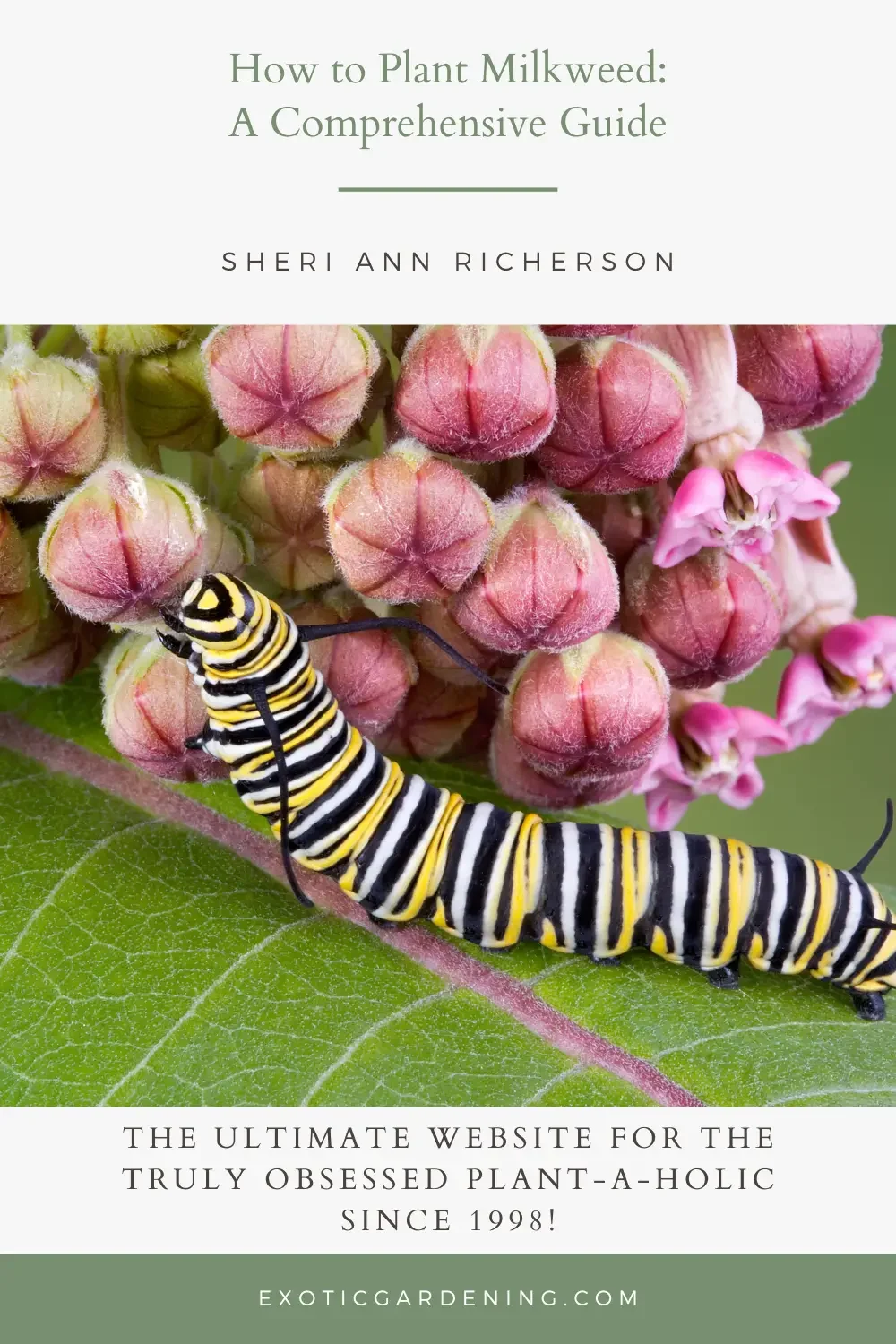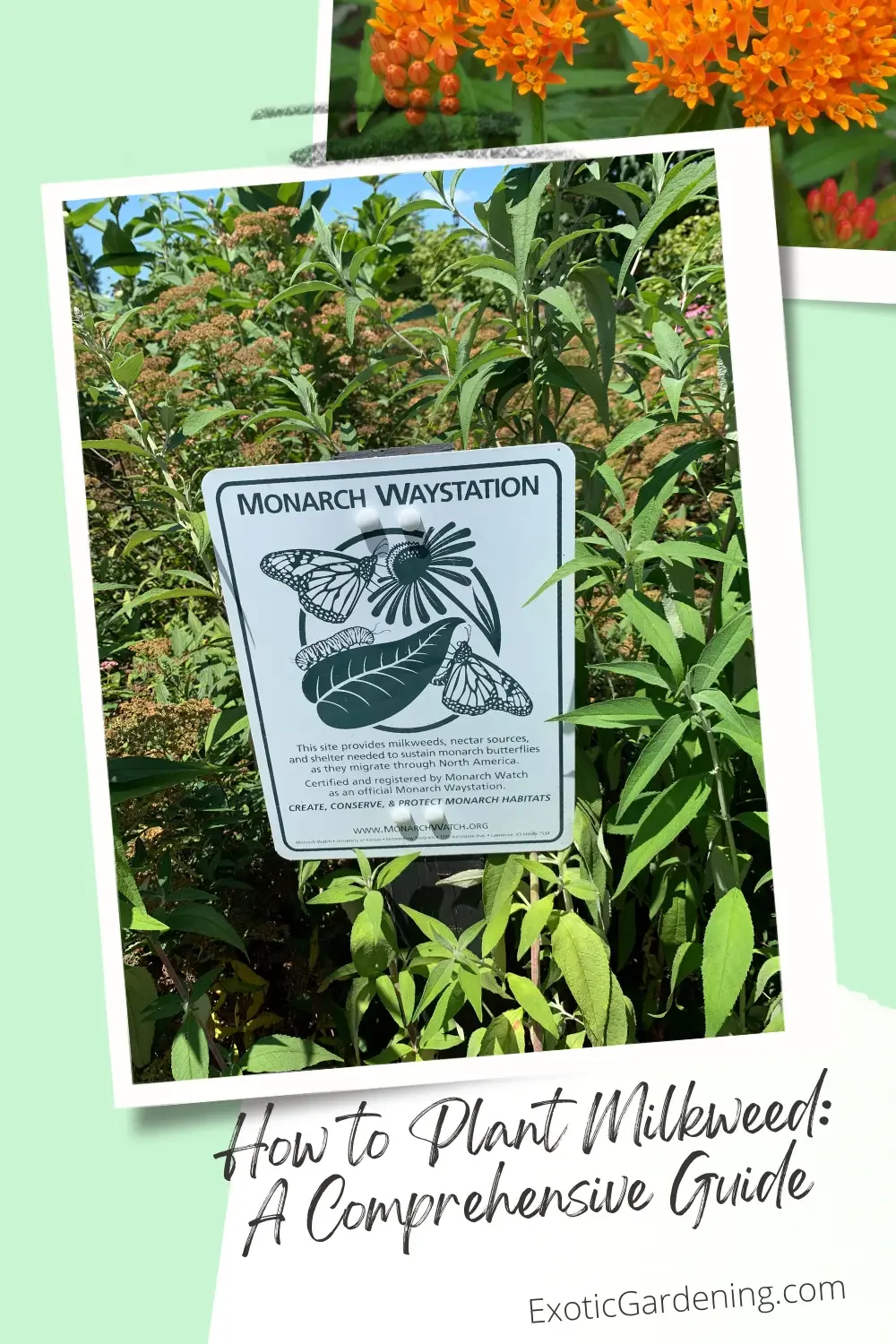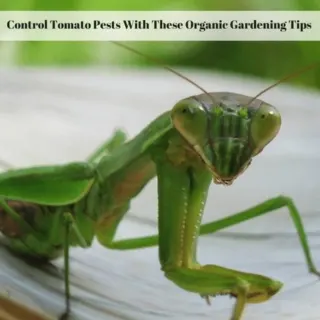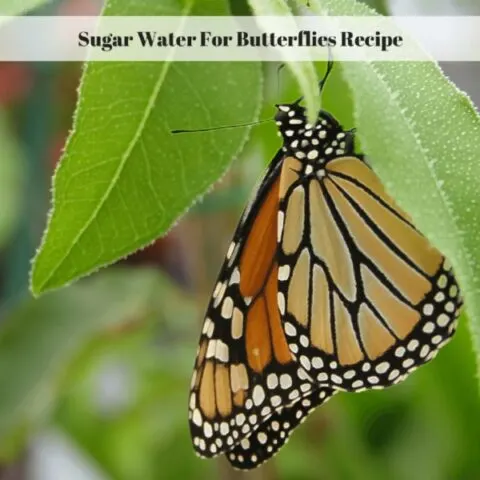Disclaimer: I did receive seeds from Sow Right Seeds in exchange for my honest review. All opinions are my own.
Are you ready to embark on a journey to cultivate the enchanting milkweed in your garden?
In this comprehensive guide, we'll delve into everything you need to know about how to plant milkweed.
From its stunning aesthetics to its crucial role in supporting butterflies and pollinators, milkweed is a gem every gardener should consider.
We'll also explore reliable sources like Lowe's, Burpee, and Amazon for milkweed seeds and plants.
Plus, we'll take a closer look at the Sow Right Seeds Milkweed Collection, which I received for an honest review, and how it can elevate your gardening experience.
The Beauty of Milkweed
When it comes to garden aesthetics, few plants can rival the captivating allure of milkweed.
It's not merely a plant; it's a masterpiece of nature that can transform your garden into a gallery of captivating aesthetics.
Let's delve deeper into the enchanting allure of milkweed and why every gardener should consider it a must-have addition.
Vibrant Blooms
Milkweed is a kaleidoscope of colors.
Its blooms range from the softest pinks to the deepest purples, with variations in between, creating a vibrant tapestry of petals that dance in the breeze.
These enchanting flowers not only serve as a visual feast but also provide an abundant source of nectar for butterflies and bees.
Distinctive Foliage
Milkweed's foliage is equally remarkable.
The leaves are large and broad, with a unique texture that adds depth and character to your garden.
Their emerald green hue forms a lush backdrop for the vibrant blooms, creating a harmonious balance between foliage and flowers.
An Ornamental Masterpiece
What sets milkweed apart is its ability to stand out in any garden setting.
Whether you're aiming for a cottage garden bursting with wildflowers or a meticulously landscaped oasis, milkweed complements various garden styles.
Its adaptability makes it a versatile choice for gardeners with diverse tastes.
Beyond the Ordinary
What sets milkweed apart from many other ornamental plants is its dual role as a visual delight and a sanctuary for wildlife.
While its beauty captivates human observers, it also beckons to butterflies and other pollinators, offering them a haven for nourishment and growth.
It's not just a pretty face; it's a living work of art that evolves daily as nature weaves its intricate tapestry of life within its branches.
Milkweed Transforms Gardens
Milkweed's beauty is not just skin deep; it's a multi-layered experience that transforms your garden into an ornamental masterpiece with a heart that beats with the rhythm of nature.
As we journey through this post, you'll discover how this striking plant can enhance your outdoor space in more ways than one.
So, whether you're an aspiring gardener or a seasoned enthusiast, prepare to be enchanted by milkweed's allure.
Milkweed: The Butterfly's Oasis
In the enchanting world of gardening, few plants play a more vital role in nurturing butterflies than milkweed.
From serving as a sanctuary for caterpillars to offering nectar-rich havens for adults, milkweed is the linchpin of any butterfly haven.
Join us as we uncover how this remarkable plant creates a haven for these delicate insects.
A Caterpillar's Sanctuary
Milkweed isn't just a pretty face; it's a lifeline for butterflies at every stage of their lives.
The large, lush leaves serve as the exclusive dining area for hungry caterpillars.
Monarch butterflies, in particular, rely on milkweed as their sole host plant, making it an indispensable component of their life cycle.
Nectar-Rich Havens
While milkweed's leaves nourish caterpillars, its vibrant flowers provide a sumptuous banquet for adult butterflies.
The nectar within these blossoms is like liquid gold for pollinators.
The sight of butterflies gracefully flitting from flower to flower is a testament to milkweed's role as a nectar-rich haven.
Creating a Butterfly-Friendly Landscape
Planting milkweed is the first step in crafting a haven for butterflies.
But to truly cater to these delicate creatures, consider companion plants that provide continuous nectar sources throughout the season.
By doing so, you'll attract a diverse array of butterfly species, turning your garden into a vibrant oasis.
Milkweed's Butterfly Magic
Milkweed's enchanting allure extends beyond its beauty; it's a lifeline for butterflies.
From nurturing caterpillars to providing nectar for adults, it plays a pivotal role in supporting these delicate insects.
In the sections that follow, we'll explore how milkweed's allure goes beyond butterflies, attracting a wide range of pollinators to your garden.
Milkweed's Pollinator Paradise
Gardens teem with life, thanks to the bustling world of pollinators.
In this section, we'll delve into the magnetic charm of milkweed that beckons a diverse range of pollinators, including bees and butterflies.
Discover why milkweed is a true beacon for these essential garden visitors and the benefits they bring to your outdoor haven.
Butterflies and Beyond
While butterflies often take center stage in discussions about milkweed, the allure doesn't end there.
This remarkable plant attracts a multitude of pollinators.
Butterflies are just the beginning; bees, both honey and native species, are drawn to milkweed's abundant nectar.
These diligent workers play a crucial role in fertilizing flowers, ensuring your garden blooms in all its glory.
A Bee's Paradise
Milkweed's nectar is like liquid gold to bees.
The striking, globe-shaped clusters of flowers are like magnets, inviting bees to gather and partake in the nectar feast.
As they collect nectar, they inadvertently transfer pollen from flower to flower, facilitating the process of pollination.
This, in turn, enhances the yield of fruiting plants in your garden, making it a pollinator's paradise.
Supporting Local Ecosystems
When you plant milkweed, you're not just creating a haven for pollinators; you're also supporting local ecosystems.
By attracting a diverse range of insects, you're fostering biodiversity, which is vital for the health of your garden and the surrounding environment.
The ripple effect of your garden's flourishing ecosystem extends far beyond your backyard.
Milkweed's Pollinator Magnetism
Milkweed's beauty and ecological significance extend beyond butterflies, encompassing a myriad of pollinators.
By inviting bees, butterflies, and other beneficial insects into your garden, you're not only enhancing its vibrancy but also contributing to the greater ecological balance.
In the sections that follow, we'll explore the ease of growing milkweed, sourcing safe and sustainable seeds, and more, unlocking the full potential of this remarkable plant in your garden.
Growing Milkweed Made Easy
In this section, we'll demystify the process of growing milkweed, revealing its surprisingly straightforward nature.
Whether you're a seasoned gardener or brand new to gardening, these expert tips and insights will guide you on your journey to nurturing this remarkable plant.
Starting from Seeds
Growing milkweed from seeds is a truly rewarding endeavor.
To kickstart this exciting journey, consider starting by sowing the seeds either indoors during early spring or late fall.
To successfully sow milkweed seeds indoors, lay the milkweed seeds on a damp paper towel, fold the paper towel over to cover the seeds, then carefully tuck the paper towel inside a plastic bag.
This bag is then refrigerated for a period of two to four weeks.
It's crucial to check daily for any signs of germination during this period.
Once you observe the seeds beginning to germinate within the paper towel, it's time to gently remove them and carefully plant them in soil.
Take care not to damage the root system and only handle the seedling by the leaves - not the delicate stem.
At the end of the four-week refrigeration period, remove the bag from the refrigerator and let it come to room temperature for another four weeks.
If, by the end of this timeframe, you notice no germination, don't be discouraged; you can simply repeat the process.
This strategic timing allows young milkweed plants to establish themselves in a controlled environment before braving the challenges of the great outdoors.
Once your milkweed seedlings have developed a robust root system and a few sets of leaves, it's time to transplant them into your garden.
This is when they'll be better equipped to thrive in their designated outdoor home.
Alternatively, you can explore a fuss-free method called winter sowing for your milkweed seeds.
This approach not only makes growing milkweed from seeds more accessible but also adds an element of anticipation and surprise to your gardening journey as you eagerly await the emergence of these beautiful plants.
Choosing the Right Location
Picking the ideal location for your milkweed is of utmost importance.
These sun-loving plants thrive in full sunlight, so opt for a spot that basks in at least six hours of direct sun daily.
It's equally crucial to ensure that the soil offers good drainage.
Milkweed prefers soils that are slightly sandy or loamy.
If you find that your soil leans towards heavy clay, you can enhance its drainage capabilities by incorporating organic matter.
Watering Wisely
While milkweed is known for its resilience to drought once it's established, nurturing young plants requires consistent moisture.
To strike the right balance, water your milkweed deeply but infrequently.
Allow the soil to dry out slightly between waterings.
Overwatering should be avoided as excessive moisture can lead to root rot and other issues.
Nurturing Growth
To foster strong and healthy growth, especially for taller milkweed varieties, it's a wise choice to provide them with support.
As these plants mature, they can become top-heavy, making them susceptible to tipping over.
Stake or cage your milkweed to ensure it stands tall and retains its visual appeal throughout its growth cycle.
The Joy of Growing Milkweed
Embarking on the journey of nurturing milkweed need not be a daunting task.
Armed with the right knowledge and care, you can witness this remarkable plant flourish in your garden.
In the sections that follow, we'll delve into the importance of responsibly sourcing milkweed seeds, explore options at Lowe's and Burpee, and even uncover the convenience of finding milkweed seeds on Amazon.
Your path to becoming a skilled milkweed gardener is well underway.
Safe and Sustainable Seed Sourcing
In this section, we shift our focus to the importance of sourcing milkweed seeds responsibly.
Discover why it's crucial to select non-GMO heirloom seeds that are not only safe for you and your family but also support the well-being of your garden and the environment.
The Safe Seed Pledge
When it comes to milkweed seeds, not all sources are created equal.
Responsible seed sourcing begins with the Safe Seed Pledge.
Many reputable seed providers, including Sow Right Seeds, pledge to sell only non-GMO (genetically modified organism) heirloom seeds.
This commitment ensures that the plants you grow are free from genetic modifications that can impact your health and the environment.
Safety for Your Garden
Non-GMO seeds are a vital choice for ensuring the health of your garden.
Genetically modified plants can have unpredictable effects on the ecosystem, potentially harming beneficial insects and other plants.
By choosing non-GMO seeds, you contribute to the preservation of a more natural and balanced environment.
Safe for Your Family
Growing your garden from non-GMO heirloom seeds means that the produce you harvest is safe for consumption.
You can enjoy the fruits of your labor with confidence, knowing that your garden is free from genetically modified crops.
Why Choose Sow Right Seeds?
Sow Right Seeds exemplifies responsible seed sourcing.
Their Milkweed Collection, including the seeds I received for an honest review, adheres to the principles of the Safe Seed Pledge.
This commitment ensures that your milkweed garden is both environmentally friendly and safe for your family.
Seeds That Nourish and Protect
Selecting non-GMO heirloom seeds for your milkweed garden is not just a choice; it's a responsibility.
By adhering to the principles of the Safe Seed Pledge, you contribute to the health of your garden, your family, and the broader environment.
In the upcoming sections, we'll explore where to find these responsible seeds, including options at Lowe's, Burpee, and even on Amazon.
Milkweed at Lowe's
In this section, we'll take a closer look at Lowe's, a trusted name in home improvement, and discover the milkweed options available at your local retailer.
Learn how to navigate Lowe's to find the right milkweed varieties for your garden and contribute to the conservation of these essential plants.
Lowe's: A Garden Haven
Lowe's is more than just a home improvement store; it's a haven for garden enthusiasts.
With a wide range of gardening products including butterfly houses, it's an accessible source for milkweed plants and seeds.
Whether you're a seasoned gardener or a novice, Lowe's offers a convenient and reliable option for starting your milkweed garden.
Finding Milkweed at Lowe's
Navigate your local Lowe's garden center to explore milkweed options.
Look for both potted milkweed plants and seed packets.
Be sure to ask the knowledgeable staff for assistance in locating the milkweed varieties that are suitable for your region and garden goals.
Varieties to Consider
Lowe's typically stocks a variety of milkweed species, including the popular Common Milkweed (Asclepias syriaca) and Butterfly Weed (Asclepias tuberosa).
These native species are excellent choices for attracting butterflies and other pollinators.
Planting Tips
Planting your milkweed is a crucial step in ensuring its successful growth and contribution to your garden's beauty and ecosystem.
Whether you're starting with potted milkweed plants or seeds, here are some step-by-step instructions that even a beginner gardener can easily follow:
For Potted Milkweed Plants:
- Gather Your Supplies: Before you begin, ensure you have everything you need: your potted milkweed plants, a shovel or gardening trowel, a watering can or hose, and some mulch.
- Choose the Right Spot: As mentioned earlier, milkweed loves sunlight. Select a location in your garden that receives at least six hours of direct sunlight each day. Ensure the soil is well-draining. If your soil is heavy clay, consider amending it with organic matter to improve drainage.
- Plant with Care: When it's time to transfer your milkweed from its pot to the garden, handle it gently. Milkweed plants have a taproot, which is a primary, deep root that helps anchor the plant and gather water and nutrients. It's crucial not to damage this taproot during transplanting.
- Dig a Hole: Dig a hole in your selected spot that is roughly the same depth as the pot the milkweed came in. Make it slightly wider to accommodate the root system.
- Remove from Pot: Carefully remove the milkweed plant from its pot. Gently tap the sides of the pot to loosen the root ball. If it's particularly stubborn, you can use your fingers to loosen the soil around the edges.
- Place in Hole: Place the milkweed in the hole, ensuring that the top of the root ball is level with the soil surface. Be mindful of the taproot while doing this.
- Backfill and Water: Fill the hole with soil, pat it down gently, and water thoroughly. Watering helps settle the soil and removes any air pockets that could hinder root growth.
- Mulch and Maintain: Consider adding a layer of mulch around the base of the plant. This helps conserve moisture, regulate soil temperature, and deter weeds. Water your milkweed appropriately during its establishment phase, keeping the soil consistently moist but not waterlogged.
For Planting Milkweed Seeds:
- Prepare Your Seeds: If you're starting from seeds, soak your milkweed seeds in water for 24 hours before planting. This can help break their natural dormancy and improve germination rates.
- Choose the Right Location: Select a sunny spot in your garden with well-draining soil, just like you would for potted plants.
- Direct Sowing: If you're planting the seeds directly in your garden, scatter them evenly over the prepared soil. Press them lightly into the soil surface, but do not bury them deeply.
- Water and Mulch: Water the seeded area gently to settle the soil around the seeds. Consider adding a thin layer of mulch to conserve moisture and protect the seeds from birds.
- Patience is Key: Keep the soil consistently moist, and be patient. Milkweed seeds may take some time to germinate, but with proper care, you should start to see seedlings emerging.
By following these step-by-step instructions and considering the unique needs of both potted plants and seeds, you'll set your milkweed on the path to healthy growth, providing beauty for your garden and vital support for pollinators.
Supporting Conservation
By purchasing milkweed from Lowe's, you're contributing to the conservation of these vital plants.
Milkweed serves as a host plant for Monarch butterflies and provides sustenance for a variety of pollinators.
Your garden can become a sanctuary for these creatures, helping to support their populations.
Exploring Burpee Milkweed
In this section, we'll dive into the world of Burpee, a renowned name in the gardening realm.
Discover the various milkweed varieties offered by Burpee and how they align with your gardening goals.
Let's explore how Burpee can be your go-to source for milkweed that transforms your garden into a pollinator paradise.
Burpee: A Gardener's Paradise
Burpee is synonymous with quality in the world of gardening.
Established in 1881, they have a long-standing commitment to providing gardeners with top-notch seeds and plants.
When it comes to milkweed, Burpee is a trusted source with a wide array of options to choose from.
A Variety of Milkweed Choices
When it comes to milkweed, variety is the spice of life, and Burpee offers an impressive selection of milkweed varieties to cater to your gardening preferences and ecological goals.
Whether you're drawn to the classic allure of Common Milkweed or the fiery hues of Butterfly Weed, you're in for a treat with these carefully curated options.
Here's a closer look at some of the milkweed varieties currently available from Burpee:
- Asclepias tuberosa, Butterfly WeedButterfly Weed, also known as Asclepias tuberosa, is a prolific bloomer that graces your garden with its vibrant orange blooms from June to August. These easy-to-grow natives not only make exquisite cut flowers but also act as irresistible magnets for butterflies, particularly the majestic Monarchs. The crown-shaped flowers cluster together, measuring up to 2 inches in diameter. In the fall, their upright pods split open, releasing seeds adorned with silky hairs. Butterfly Weed is perfect for meadows, wildflower gardens, and dried pod arrangements. You can sow these seeds outdoors in spring after the last frost or in late summer.
- Asclepias incarnata, Ice Ballet'Ice Ballet' milkweed forms delicate clouds adorned with small, fragrant, tiny white flowers (approximately ¼ inch in size) from early to midsummer. Standing atop 3-3.5 feet tall stalks with lance-shaped, dark-green leaves measuring 3-6 inches, these flowers are a true delight for hummingbirds and butterflies. After the blooming period, attractive seed pods develop (up to 4 inches long), releasing seeds with silky hairs that dance in the wind. 'Ice Ballet' flowers also make charming additions to your vase arrangements. This Western milkweed variety's compact, clump-forming plants thrive in medium to wet soil under full sun.
- Asclepias speciosa, Showy MilkweedShowy Milkweed boasts fragrant pinkish-white to pinkish-purple blooms that will entice pollinators to your garden throughout the spring and summer. Asclepias speciosa is a marvelous addition to any landscape, especially when naturalized. Its leaves serve as the primary food source for monarch butterfly larvae, making it an invaluable addition to your garden. After flowering, the seed pods split open, revealing silky-tailed seeds that disperse in the wind. Before splitting, these seed pods can enhance any fall bouquet. Asclepias speciosa adapts well to various environments, including woodland areas with openings for sun, dry slopes, streamsides, and roadsides. These plants are drought-tolerant, versatile, and deer-resistant, making them a splendidly low-maintenance addition to any landscape.
- Asclepias, Red ButterflyRed Butterfly milkweed is known for its unusual clusters of fiery orange-scarlet flowers that attract butterflies throughout the summer until the first frost. These plants thrive in hot weather conditions. In milder areas, you can sow the seeds directly outdoors after the danger of frost has passed. For those interested in flower arranging, it's best to cut the blooms when they are about ⅔ open.
Whether you're aiming to create a butterfly haven or simply add a burst of color to your garden, Burpee's milkweed varieties offer a delightful array of choices to suit your gardening aspirations.
Additionally, with the availability of Burpee seeds at many local retailers, you have the flexibility to choose your preferred sourcing method.
Burpee - Your Milkweed Connection
Burpee's rich history and commitment to quality make it a reliable choice for sourcing milkweed.
Their wide range of milkweed varieties ensures that you can find the perfect fit for your garden's needs and your personal gardening style.
Next, we'll explore another convenient source for milkweed seeds - Amazon.
Milkweed Seeds on Amazon
In this final section, we'll explore the convenience of purchasing milkweed seeds on Amazon.
The world's largest online marketplace offers a wide array of options, including the Sow Right Seeds Milkweed that I grew.
In this section, you will learn how to navigate Amazon's platform, make informed choices, and have milkweed seeds delivered right to your doorstep.
Amazon: A World of Options
Amazon is a virtual garden center where you can discover a vast selection of milkweed seeds and plants.
This convenience allows you to explore various options, read customer reviews, and find the perfect milkweed varieties to suit your garden goals.
However - a word of caution, be sure you are buying from a reputable retailer and getting the seeds you think you are ordering!
The Sow Right Seeds Milkweed Collection
One standout option available on Amazon is the Sow Right Seeds Milkweed Seed Packets.
This collection is known for its beauty and its commitment to supporting pollinators. Here are some key features of this collection:
- Beautiful Blooms: The Sow Right Seeds Milkweed Collection boasts stunning, vibrant flowers that will enhance the visual appeal of your garden.
- Butterfly Garden: These milkweed plants provide ideal host environments for many butterfly species, including the iconic Monarch. Watch caterpillars thrive on the large leaves and grown butterflies flock to the nectar-rich flowers.
- Pollinator Friendly: Milkweed's nectar is a magnet for bees and butterflies, promoting better pollination in your garden.
- Easy to Grow: Detailed instructions are included on each seed packet, and you can find additional growing tips on the "Sow Successful" Blog. Plus, the Sow Right Seeds team is available to answer your questions and offer support.
- Safe Seed: Sow Right Seeds takes the Safe Seed Pledge, ensuring that the seeds you receive are non-GMO heirlooms that are safe for your family and the environment.
Sow Right Seeds Milkweed Collection
In this section, we'll explore the Sow Right Seeds Milkweed Collection, a treasure trove of milkweed varieties designed to elevate your garden's beauty and support pollinators.
This collection offers an array of milkweed species, each with its unique charm and ecological benefits.
Let's delve into the diversity of milkweed species available in this remarkable collection:
Common Milkweed (Asclepias syriaca)
Native to Most US States
Common Milkweed, also known as Asclepias syriaca, is a native plant that graces most US states with its presence.
This beautiful wildflower produces clusters of purple-pink flowers, adding a touch of elegance to your garden.
It's a favorite among both gardeners and pollinators for its aesthetic appeal and its role in supporting local ecosystems.
One of the outstanding features of Common Milkweed is its undeniable appeal to pollinators.
The nectar-rich blooms attract a wide range of butterflies and bees, making it a bustling hub of activity in your garden.
Additionally, Common Milkweed provides the essential large leaves that caterpillars need for their development and offers nectar-rich flowers to nourish adult butterflies.
Showy Milkweed (Asclepias speciosa)
Native to Western North America
Showy Milkweed, scientifically known as Asclepias speciosa, is a native gem found in Western North America.
This stunning wildflower graces your garden with its delicate pink blooms, adding a touch of grace to your outdoor space.
Butterfly Milkweed (Asclepias tuberosa)
Native to North America
Butterfly Milkweed, also recognized as Asclepias tuberosa or butterfly weed, is a native treasure found throughout North America.
This dazzling wildflower showcases vibrant orange and yellow flowers that bring a burst of color to your garden.
Rose Milkweed (Swamp Milkweed)
Native to Most Eastern and Southern US States
Rose Milkweed, also known as Swamp Milkweed, is native to a wide range of eastern and southern US states.
This enchanting plant adorns its branches with clusters of purple-pink flowers, captivating both gardeners and pollinators alike.
The Sow Right Seeds Milkweed Collection is a testament to the diversity and beauty of milkweed species.
By incorporating these varieties into your garden, you not only enhance its aesthetic appeal but also provide essential resources for butterflies, bees, and other pollinators.
Whether you choose Common Milkweed, Showy Milkweed, Butterfly Milkweed, or Rose Milkweed, you're making a positive impact on your local ecosystem while enjoying the stunning beauty of these native wildflowers.
Customer Reviews and Ratings
One of the benefits of purchasing milkweed seeds on Amazon is the wealth of customer reviews and ratings.
These can provide valuable insights into the performance of specific seed varieties and help you make informed choices.
Amazon - Your Milkweed Marketplace
Amazon offers the convenience of having milkweed seeds delivered directly to your doorstep, including the Sow Right Seeds Milkweed Seed Packets.
With a plethora of options and the wisdom of fellow gardeners in the form of reviews, Amazon is a reliable choice for sourcing milkweed seeds.
Your journey to create a thriving milkweed garden is just a few clicks away.
With this, we conclude our comprehensive guide on how to plant milkweed.
By exploring its beauty, role in nurturing butterflies, attracting pollinators, and responsible seed sourcing, we hope you are now well-equipped to embark on your milkweed gardening journey.
Whether you're enhancing your garden with Lowe's or Burpee varieties, or opting for the convenience of Amazon, may your milkweed garden flourish and thrive while supporting the incredible world of pollinators.
FAQs About Milkweed
Q: What is milkweed, and why should I grow it?
A: Milkweed is a stunning flowering plant that attracts butterflies, bees, and other beneficial insects. Growing it enhances your garden's beauty and ecological impact.
Q: How do I start growing milkweed from seeds?
A: Start by sowing milkweed seeds indoors in early spring, or winter sow them outdoors in a protected area after December 21, then transplant them to your garden after the last frost. Be sure to see the section above on growing milkweed from seeds for more complete instructions.
Q: Can I plant milkweed directly in my garden?
A: Yes, you can, but starting from seeds indoors gives you better control over their early growth.
Q: What are the key benefits of milkweed for butterflies?
A: Milkweed serves as a host plant for butterfly caterpillars and provides nectar for adult butterflies, creating a complete life cycle haven.
Q: How can I attract Monarch butterflies to my garden?
A: Planting milkweed, especially the native species, is a surefire way to attract Monarchs.
Q: Are there different varieties of milkweed to choose from?
A: Yes, there are various milkweed species, each with its unique characteristics. Explore options like Common Milkweed or Swamp Milkweed.
Q: What is the Sow Right Seeds Milkweed Collection, and why is it special?
A: This collection offers a variety of milkweed seeds that are not only beautiful but also sustainably sourced, supporting safe and non-GMO gardening.
Q: When is the best time to plant milkweed seeds?
A: Early spring or late fall is ideal for sowing milkweed seeds.
Q: How long does it take for milkweed to bloom from seeds?
A: Milkweed typically blooms in its second year after planting from seeds.
Q: Can I grow milkweed in pots or containers?
A: Yes, you can grow milkweed in containers, but choose large ones to accommodate their extensive root system.
Q: Is milkweed suitable for all regions?
A: There are milkweed varieties suited to various regions, so research native species for your area.
Q: How do I care for milkweed plants once they're established?
A: Keep them well-watered, ensure they receive full sun, and avoid using pesticides in the vicinity.
Q: Do milkweed plants require pruning?
A: Deadheading spent flowers can encourage more blooms, but milkweed generally doesn't require extensive pruning.
Q: Can I collect milkweed seeds from my plants?
A: Yes, you can collect seeds from mature milkweed pods for future planting.
Q: Are milkweed plants invasive?
A: While some milkweed species can be aggressive in certain settings, native varieties are generally well-behaved and essential for local ecosystems.
Q: Can I grow milkweed alongside other garden plants?
A: Yes, milkweed can coexist with other garden plants, adding beauty and ecological benefits to your garden.
Q: How do I protect my milkweed from pests?
A: Encourage natural predators like ladybugs and lacewings to control pests rather than resorting to pesticides.
Q: Are there any diseases that affect milkweed plants?
A: Milkweed is relatively disease-resistant, but watch out for aphids, which can occasionally infest the plants.
Q: Can I use milkweed as a cut flower in floral arrangements?
A: Yes, milkweed's distinctive flowers make a unique addition to floral arrangements, but handle them with care as the sap can be milky and sticky.
Q: How can I promote the conservation of milkweed and Monarch butterflies?
A: Participate in programs like Monarch Watch, and consider creating a dedicated butterfly garden to support these vital pollinators.
Buzzing with Life: The Ultimate Pollinator Series
How to Attract Bees: A Gardener's Guide
Discover the art of garden harmony with our guide on how to attract bees. Cultivate a vibrant haven for these essential pollinators!
Monrovia Has The Best Bee, Butterfly And Bird Attracting Plants For Sale!
Discover how to create a vibrant garden with Monrovia's bee, butterfly, and bird-attracting plants. A pollinator's paradise awaits!
Save The Bees! Here Is How To Help #BeeBold
Join the Fight to 'Save the Bees' and Make a Positive Difference with Our Insightful Guide to Bee Conservation.
Cultivating Biodiversity In Your Garden: Plants That Give Back
Discover the art of cultivating biodiversity in your garden with our expert tips on choosing plants that enrich your ecosystem.










